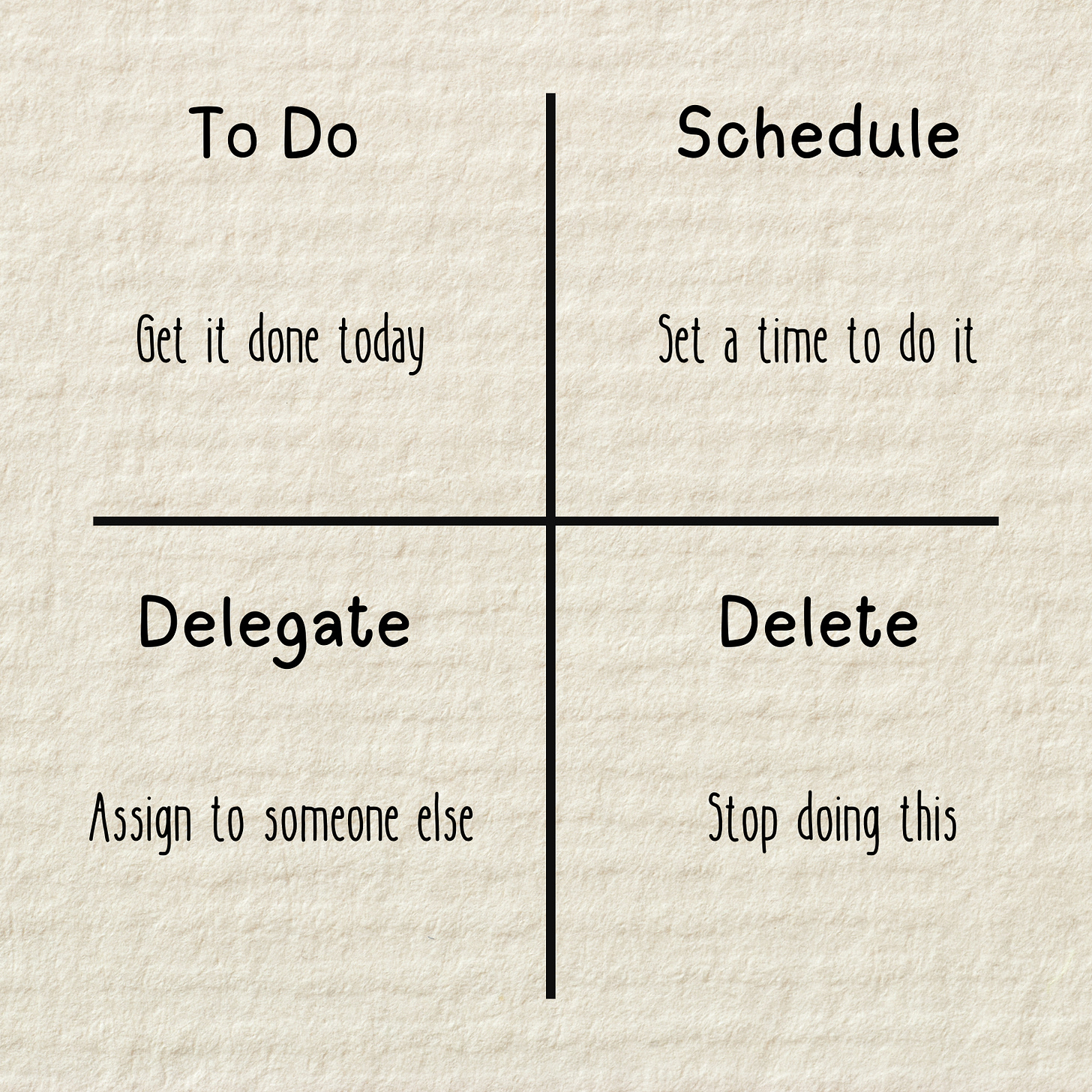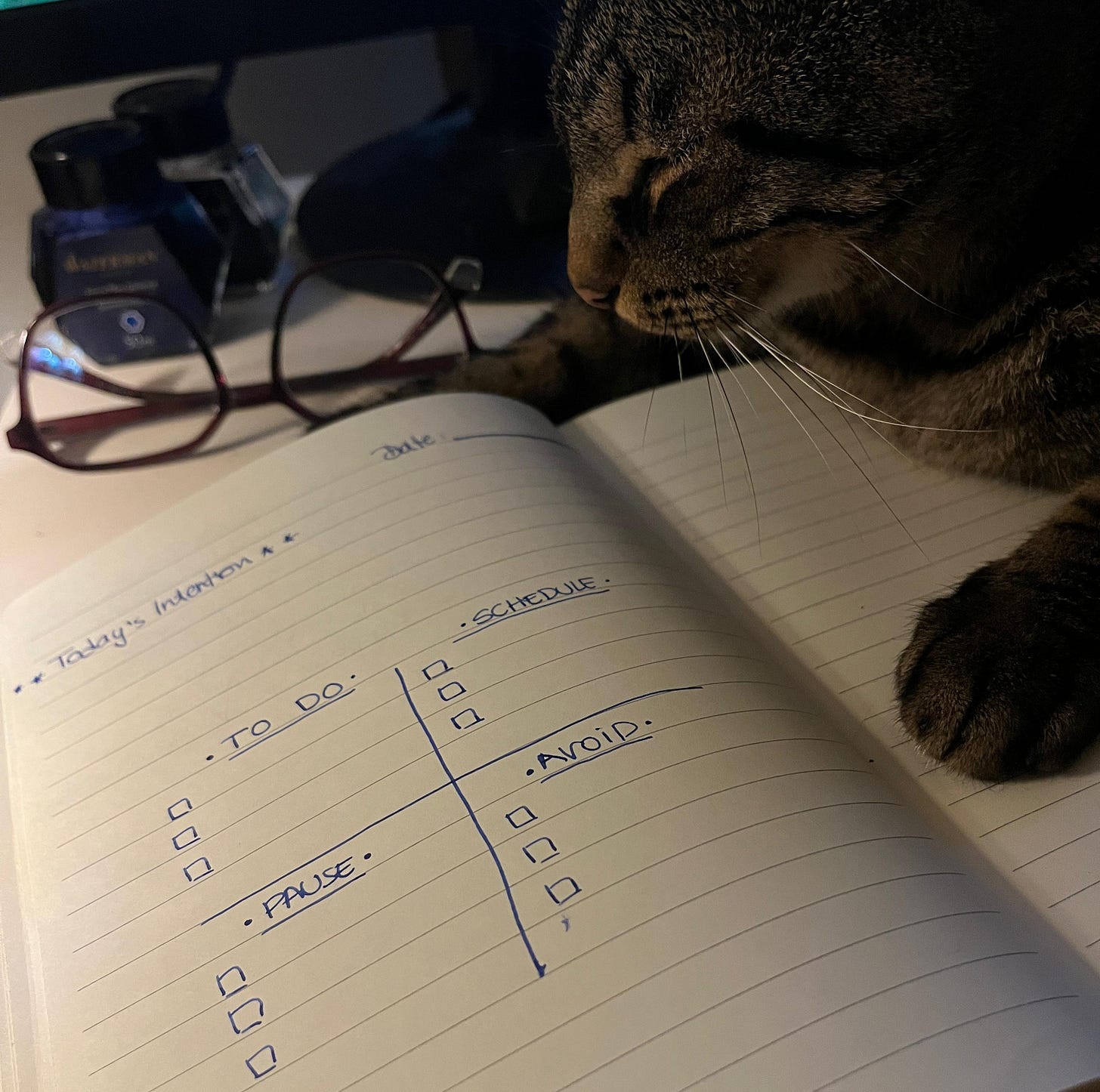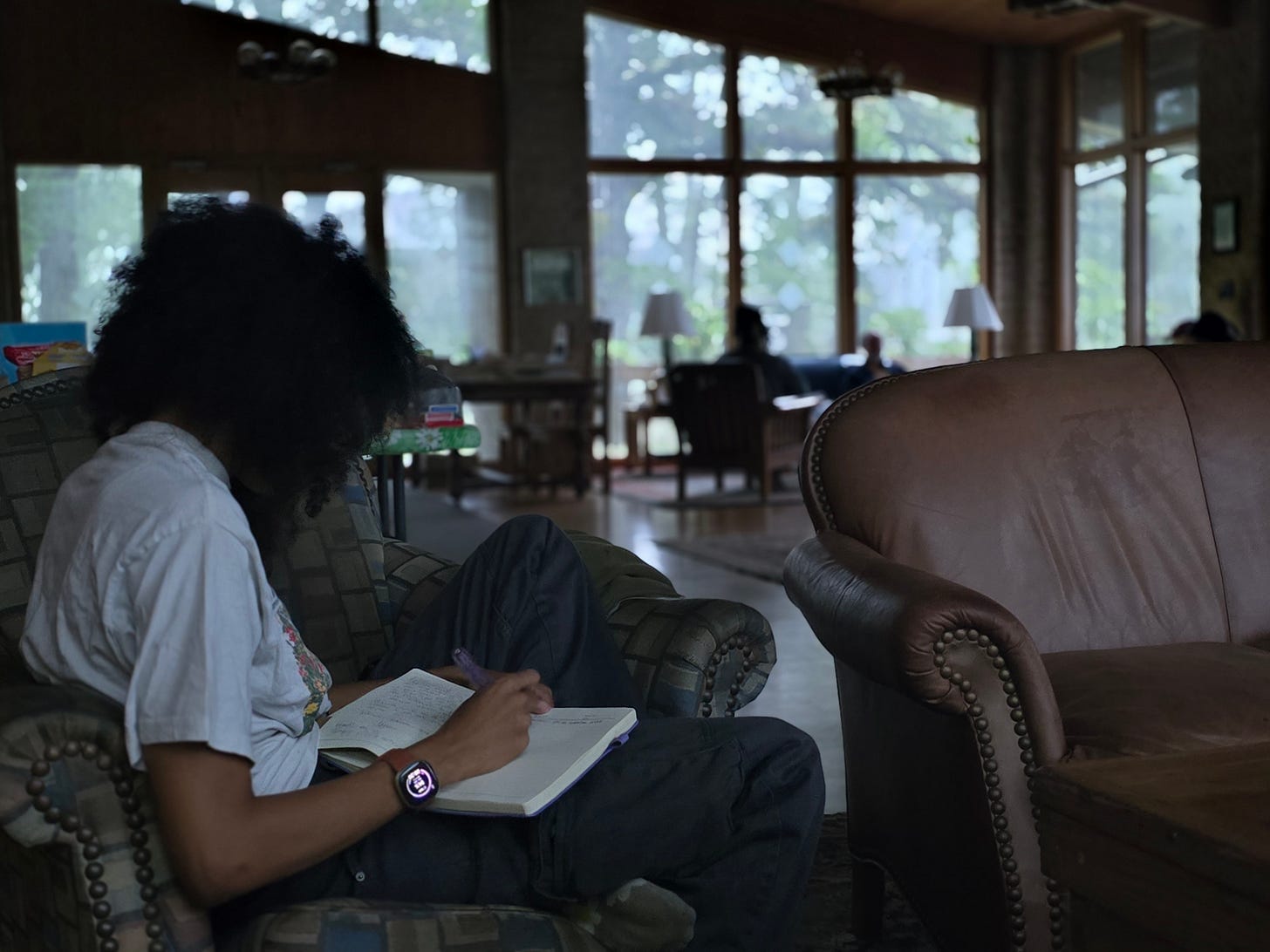Cut Decision Fatigue in 5 Minutes: The Eisenhower Matrix
Separate urgent vs important and plan your day with more intention.
Hello, and welcome back to The Pause!
We’ve arrived at part 4 of the Summer Slow Productivity series.

Over the past few weeks, we’ve explored three tools that can help you move at a more sustainable pace:
Morning Pages → clearing mental clutter.
Energy Mapping → matching work to your natural rhythms.
Pomodoro Sprints → focusing with gentle structure. 🍅
I also recently taught a live slow productivity workshop where we covered all of these practices in more depth, and it was beautiful to see how many of you are incorporating them into your own routines.
Today, we’re adding another piece: a simple method I return to almost every morning, right when I sit at my desk to work, to help me prioritize as a person with many interests and multiple projects in motion.
Let’s talk about the Eisenhower Matrix!
What’s the Eisenhower Matrix?
The Eisenhower Method or Matrix comes from a quote often attributed to President Dwight Eisenhower:
What is important is seldom urgent, and what is urgent is seldom important.
From this idea came the Eisenhower Matrix: a four-quadrant chart that divides tasks into:
Urgent & Important (To-do)
Important but Not Urgent (Schedule)
Urgent but Not Important (Delegate)
Neither Urgent nor Important (Delete)
It’s been a productivity classic for decades, but like most productivity systems, I tried it, noticed how it felt, and reshaped it just a tad to make it work even better for me.
Slow Productivity Matrix
When I started using the Eisenhower Matrix, only a few months ago, I immediately saw how much it helped me put my to-do list into perspective and what’s most important, it helped me find clarity and be able to prioritize.
Like many systems, the Eisenhower Matrix in its classic form felt a little too sharp for my softer way of working. I don’t want my mornings to feel like I’m running a military operation… I want them to feel intentional, spacious, and aligned with my energy.
So I kept the matrix and the concept, yet I tweaked a couple of the sections to reflect how I actually want to live and work:
To-Do (today): the two or three most important tasks that truly deserve my attention.
Schedule (pencil in): the meaningful-but-not-urgent projects I want to protect time for, so they must be put on the schedule.
Pause (self-care, play): the activities that restore my energy and bring me joy: a walk, a nap, yoga, food, journaling.
Avoid (what’s sucking my energy?): tasks, spaces - and sometimes relationships- that seem urgent but drain me or don’t move me forward in what I truly want.
This subtle shift made the Eisenhower method feel more human, more in line with slow productivity. Instead of focusing on urgency, I’m now asking: What matters, what can wait, what nourishes me, and what can be released?
This system works because it shifts my focus from urgency to meaning. It gives me clarity on what actually deserves my attention, protects space for creative work, validates rest as part of the process, and makes it easier to spot what drains me.
It’s quick and it keeps me aligned with both my priorities and my energy.
Connecting the Matrix to Energy Mapping
The matrix tells me what matters, but it doesn’t tell me when to do it. That’s where energy mapping comes in.
I have found that pairing the two creates a fuller picture:
The Matrix helps sort through urgency and importance.
Energy Mapping helps match those priorities with the times of day when I have the right energy for them.
For example, I know my creative energy peaks in the morning. That’s why I reserve the first productivity block of the day to something from the “To-Do” section that requires high energy.
In the late afternoon, when my concentration dips after lunch, I’ll engage in a project that requires low energy, or I’ll even choose a task from the Pause section of the matrix to take a well-deserved break.
This way, the systems work with and for each other, and I feel more balanced.
Invitation to Practice
The Eisenhower matrix, or the slow productivity version of it, is a quick and effective way to set priorities straight and get in the flow.
If you’d like to try it, keep it simple:
Set up a time monthly, weekly, or daily to make your list. Write down everything you feel you “should” do.
Layer in energy mapping. Ask: How much energy will I need for each task? And tag them as high, medium, or low energy.
Sort it into the Matrix: the traditional one or your own version.
That’s it! No fancy charts or overthinking required. Just a quick check-in that takes only a few minutes but can shift your whole day.
Looking Ahead
This practice has taught me that urgency is rarely the best compass. What really matters often asks for patience, gentleness, and a slower kind of attention.
The Slow Productivity Matrix gives me just enough structure to prioritize without pressure, and enough softness to honour my energy along the way.
I invite you to try it this week: while you’re having your morning cuppa or before your first productivity block of the day, pause for five minutes and give it a try.
Ask yourself: What truly matters today? What can wait? What will restore me? And what can I release? Notice how it shifts the way you move through your day.

Next week, in the fifth instalment of the Summer Slow Productivity series, we’ll explore a tool I love for celebrating your progress, no matter how small: the Done-list ✨.
Until then, pause often, breathe deeply, and be kind: especially to yourself.
Much love,
Laia.
Loved this post? ⤵️
📲 Screenshot your favourite part and tag me @laia.bove
💌 Reply to this email: I’d love to hear from you!
☕ Invite me to a Ko-Fi.
Or even…








Loved it! I have just shared it. I loved the alignment, meaningful tasks….I will understand my path now and therefore my priorities. Moltes gràcies 💖💕
Laia! Thanks for introducing this. I been praying for help with prioriaztion of tasks. I noticed in my writing matrix there was one project that I committed to but did not actually write. I think your matrix will help me understand my priorities better. Gracias 🩷 exhale 💜 powerful 🤎🖤